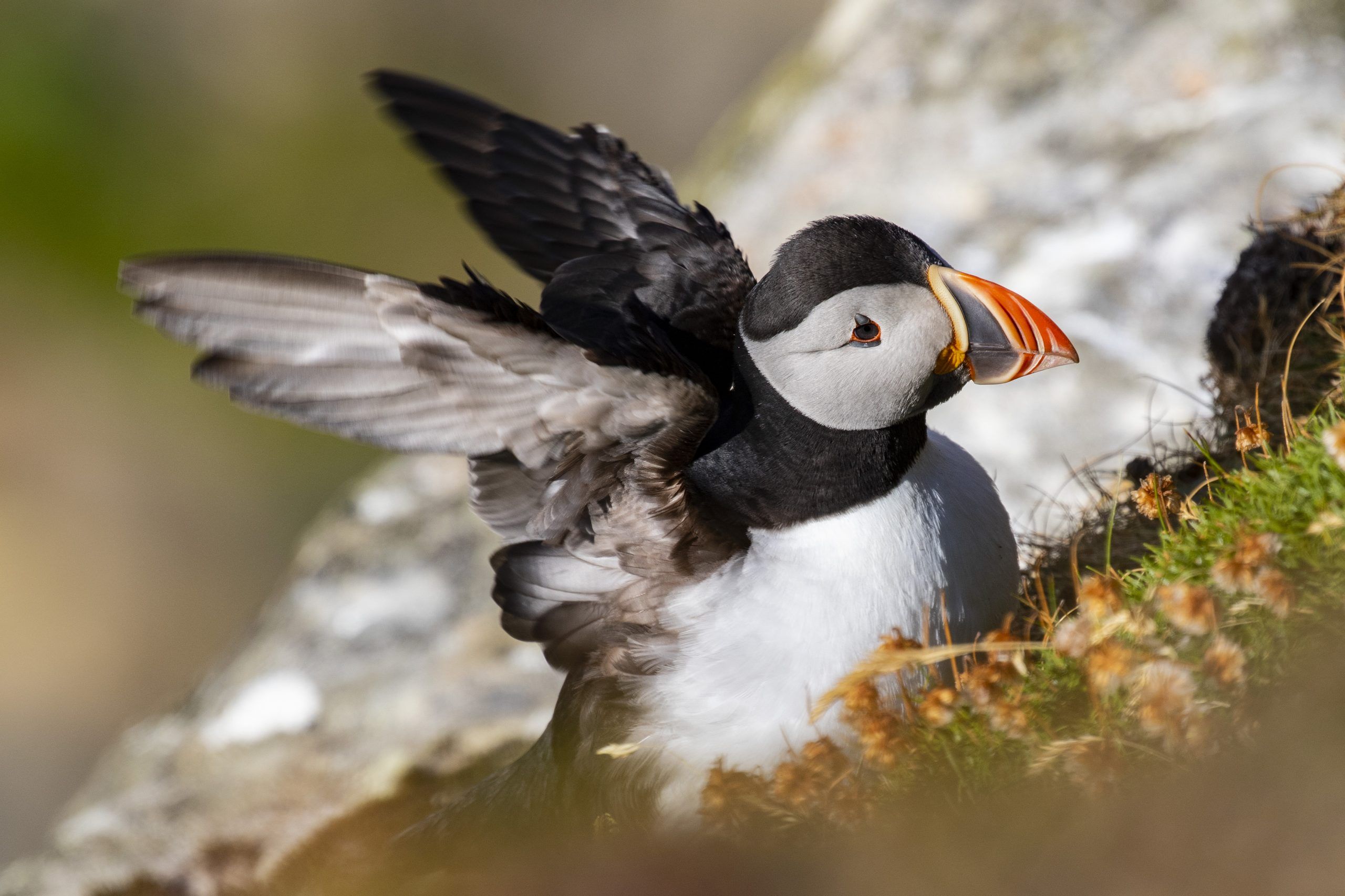
Puffin © Charlie Phillips
The month of May shows us nature’s lust for life. Nature can recover if we help it, says Fight for Scotland’s Nature campaign coordinator Miriam Ross.
The month of May, I contend, is one of Scotland’s best. Even when spring has been slow to show itself, suddenly in May it puts on a performance, full of bees and blossom and bright green leaves. Nature’s drive for renewal is evident all around us.
Added to that, May is Scotland’s sunniest month, and when the sun shines in May I can fool myself that it’s going to stay with us right through to September.
This May, as coronavirus restrictions are eased, the sense of possibility is even sharper than usual. We could take a boat trip on the Firth of Forth to see the puffins! We could go and visit friends 40 miles away!
This May, of course, there’s also the election. The result is going to please some and not others. But no matter where your political allegiance lies, the fact remains that a large cohort of keen new people will be joining the familiar faces at Holyrood this year. Each one of them will have the opportunity to push for action on the issues they care about.

Bluebells © Sandra Graham
Not least among the issues that should concern MSPs, new and returning, is the state of Scotland’s nature. A staggering 49 percent of species in Scotland have decreased in number since 1970, and one in nine species is at risk of extinction.
It’s far from certain whether future generations will be able to see puffins in the Firth of Forth in May.
But decline is not inevitable. As the month of May so amply demonstrates, nature has quite a lust for life. Just as people can recover, so can nature.
At Forsinard Flows in Caithness, globally important peatlands are being carefully restored, leading to the return of bog plants and wildlife.
At the Mar Lodge Estate in the Cairngorms, regeneration of ancient pinewood forests has allowed juniper, dwarf birch and willows to recover, and rare hen harriers to return.
In 2020, just four years after the seas around the south coast of Arran were protected from scallop dredging, divers discovered a large bed of flame shells – a beautiful shellfish that had almost disappeared from the Clyde region.

Lamlash Bay, Arran
Each small story of nature’s triumph shows us what is possible. To reverse the downward trend, to multiply these small successes and help Scotland’s nature recover on a big scale, we need action across society, driven by government.
This kind of drive is already underway for the climate. Scotland’s ambitious climate targets are vital in reducing greenhouse gas emissions and moving us towards the goal of ‘net zero’ emissions by 2045.
Now it’s time to do for nature what we’re doing for the climate. Three of Scotland’s five main parties – Labour, the Liberal Democrats and the Greens – have already committed in their manifestoes to support legally binding targets for the recovery of Scotland’s nature.
As with climate change, we need to act fast. The new Scottish government must set legally binding targets by 2022 to make sure that by 2030 we stop the loss of Scotland’s nature and put it on track to recovery.
For the sake of all the months of May still to live – ours and our descendants’ – I hope MSPs of all parties will do everything they can to make this happen.
This article was first published in the Scotsman on 4 May 2021.
